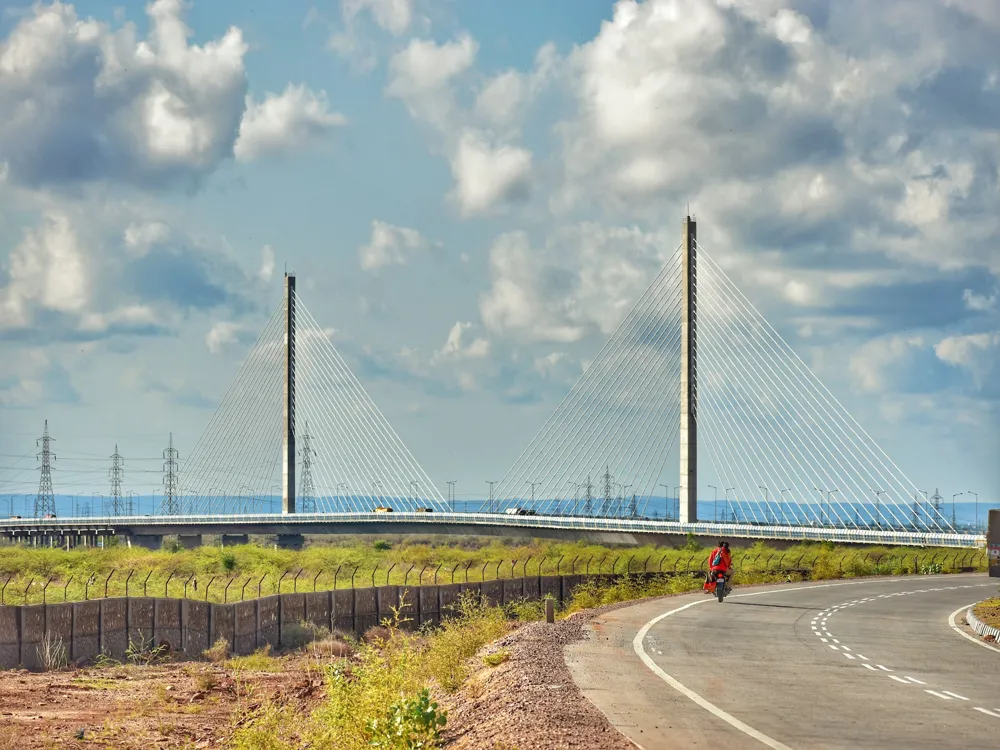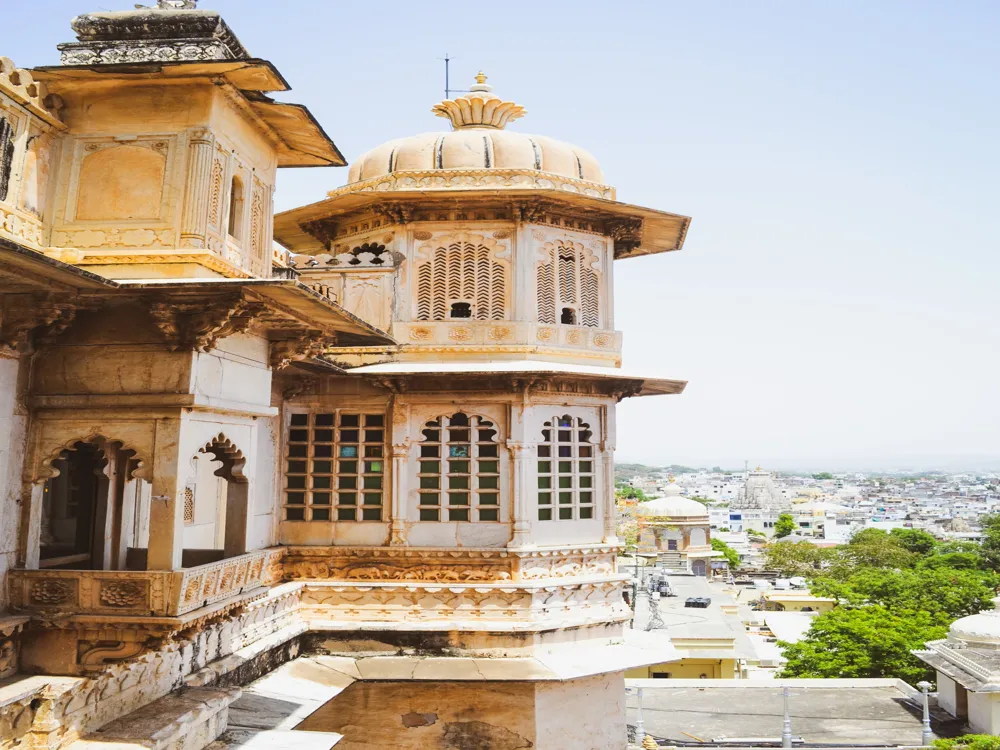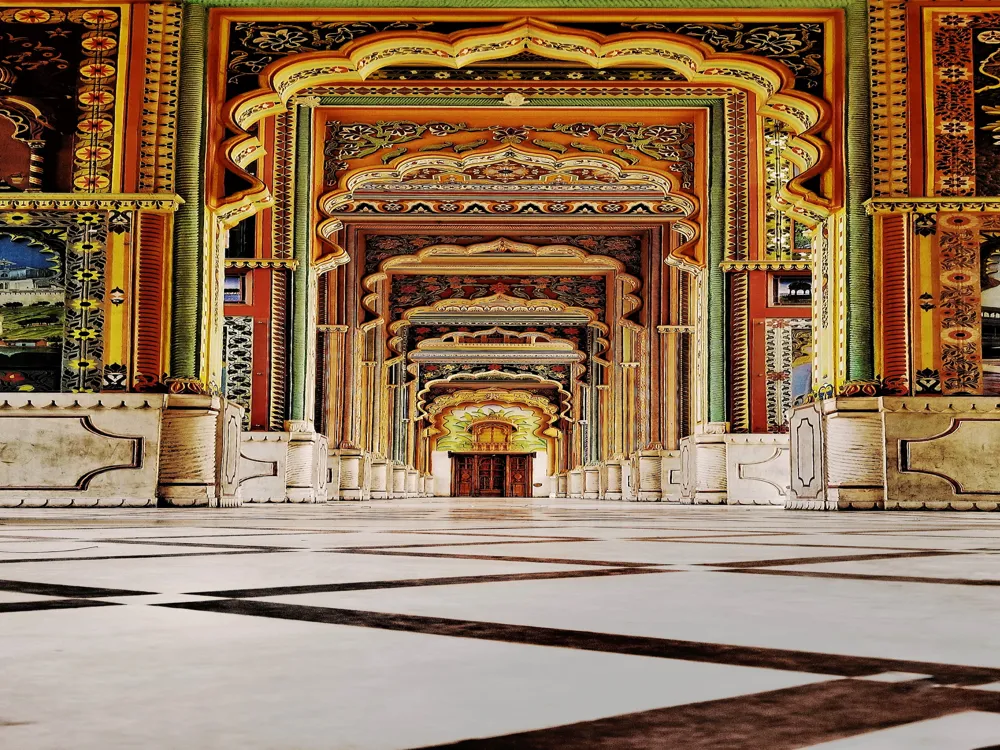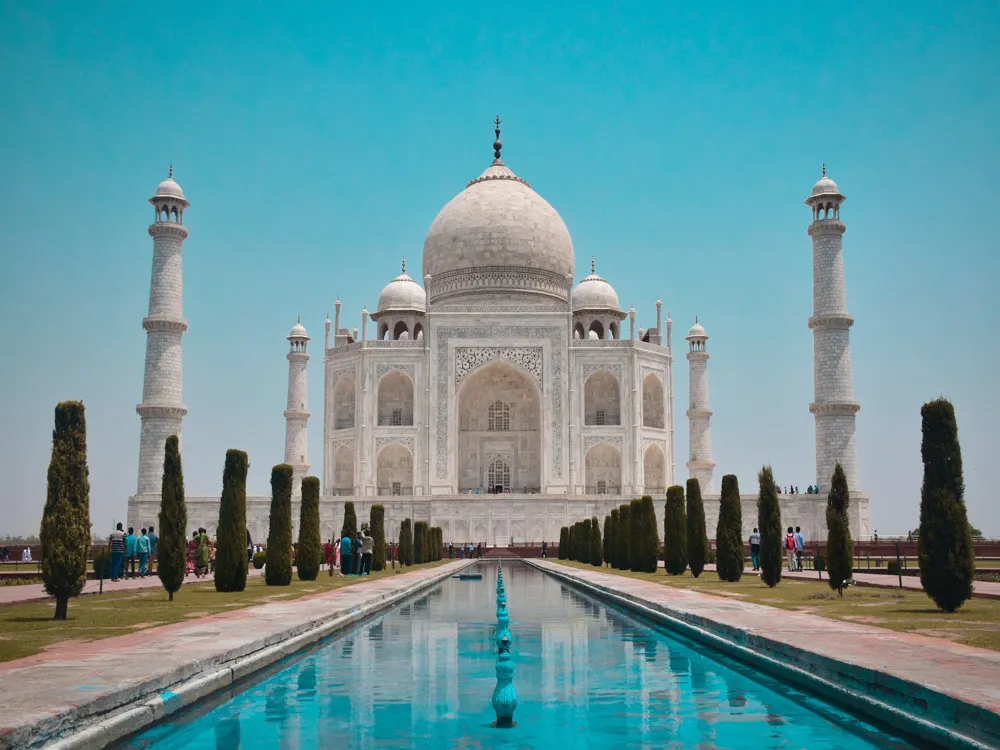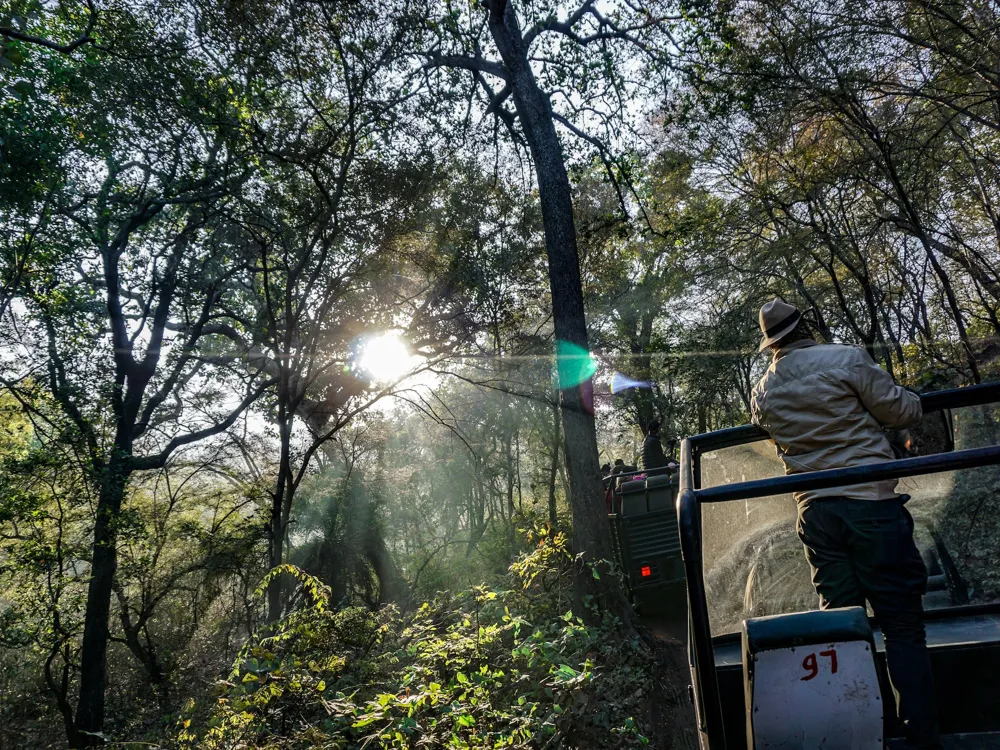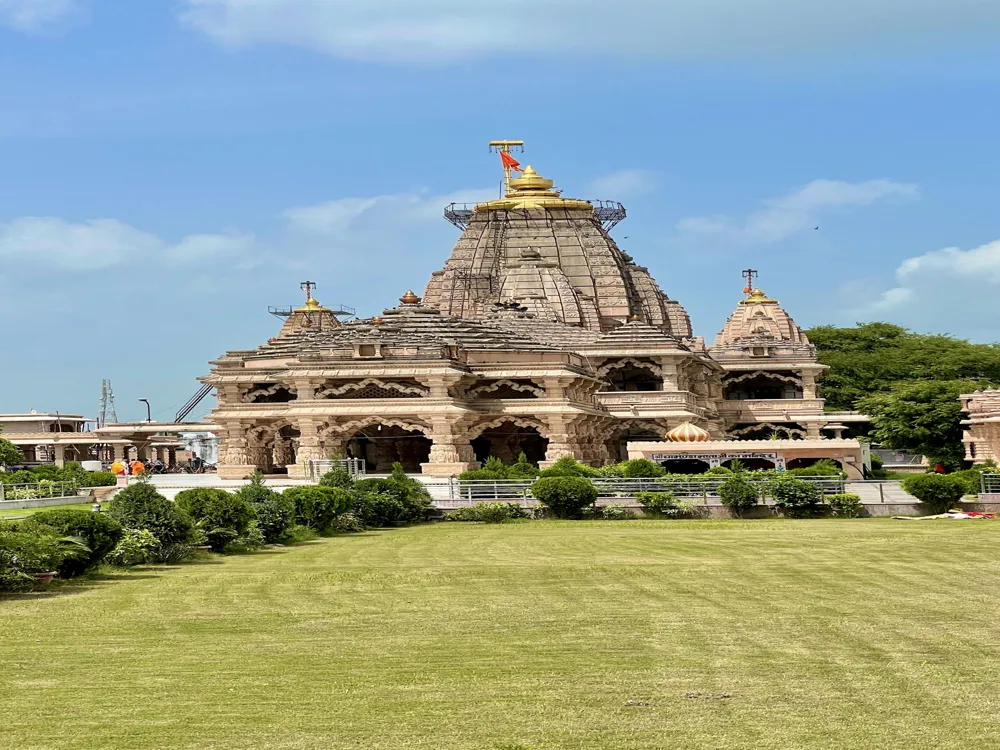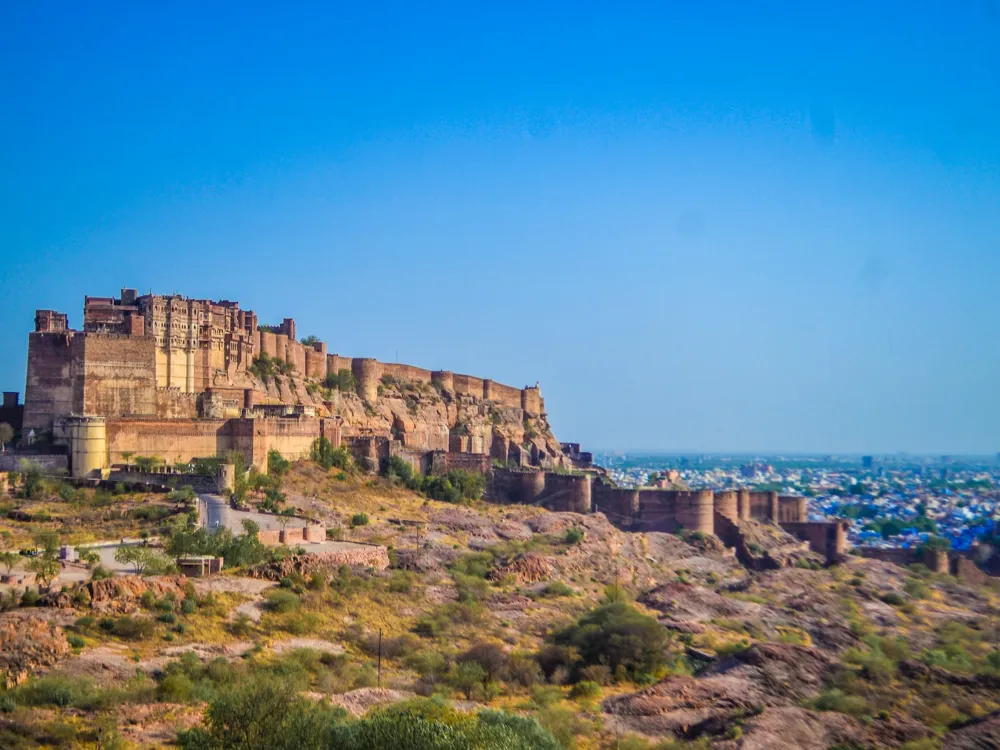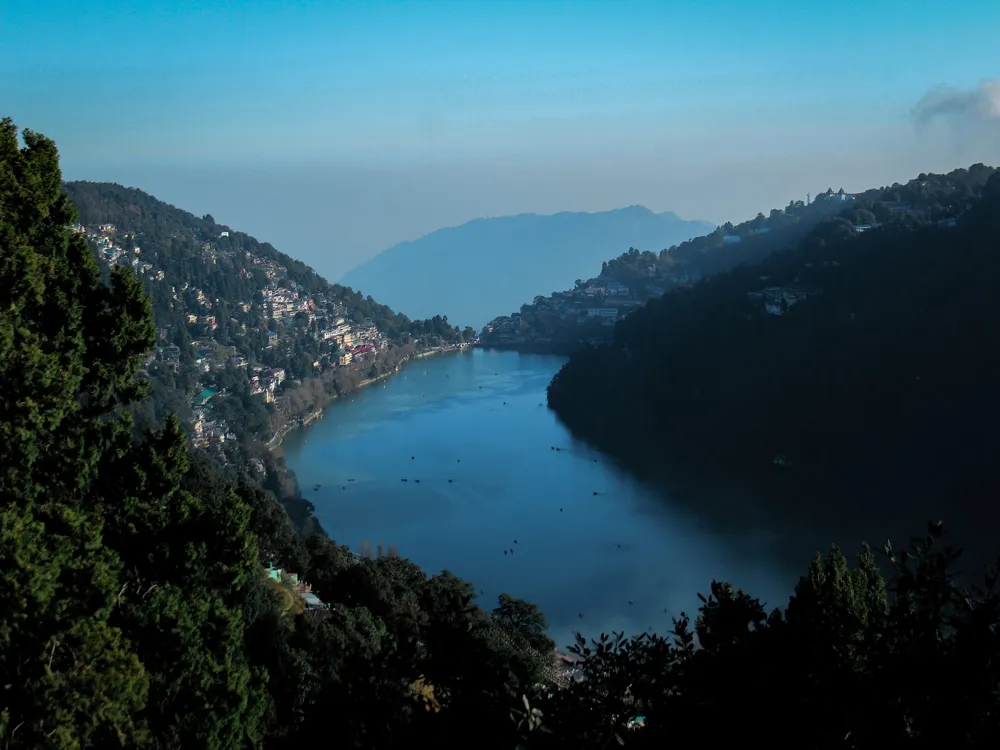Nestled in the vibrant city of Kota in Rajasthan, the Kansua Temple stands as a beacon of ancient Indian architecture and spiritual significance. This historical temple, dedicated to Lord Shiva, is not just a place of worship but a testament to the rich cultural heritage of India. Its origins date back to centuries ago, making it a significant landmark for historians and devotees alike. The Kansua Temple, surrounded by the serene waters of the Chambal River, provides a tranquil escape from the bustling city life, offering visitors a unique blend of spiritual and natural beauty. The temple's history is steeped in legends and folklore, intertwined with the historical developments of Kota and the surrounding regions. It's believed that the temple was initially built by the king of Kota, but over the years, it has seen renovations and expansions by various rulers, reflecting a mix of architectural styles and cultural influences. The temple not only serves as a place of worship but also as a mirror reflecting the historical and cultural evolution of Rajasthan. The Kansua Temple is more than just a structure; it is a living narrative of time, showcasing the artistic and spiritual inclinations of the people of Rajasthan throughout history. Its walls and sculptures tell stories of devotion, artistry, and the changing tides of time, making it a must-visit destination for anyone interested in the rich tapestry of Indian history and spirituality. The Kansua Temple of Kota is a marvel of ancient Indian architecture, showcasing a blend of artistic styles that have evolved over centuries. The temple's design reflects the typical features of North Indian temple architecture, known for its intricate carvings, detailed sculptures, and grand spires. The main shrine is dedicated to Lord Shiva, housing a revered Shiva lingam, which is a central element in the worship practices at the temple. The architecture of the temple is a harmonious blend of aesthetics and spirituality. The outer walls are adorned with carvings and sculptures that depict various deities from the Hindu pantheon, along with scenes from Hindu mythology. These carvings are not just decorative elements but are deeply symbolic, representing the beliefs and values of the era in which they were created. One of the unique architectural features of the Kansua Temple is its use of locally sourced materials, which has allowed the structure to blend seamlessly with its natural surroundings. The temple's layout follows the traditional Vastu Shastra principles, which is an ancient Indian system of architecture and design. This adherence to Vastu Shastra is believed to bring positive energy and spiritual harmony to the temple and its visitors. The interior of the Kansua Temple is as impressive as its exterior. The sanctum sanctorum, where the Shiva lingam is enshrined, exudes a sense of divine presence. The walls inside are covered with frescoes and paintings, some of which are centuries old, depicting various episodes from Hindu mythology. The meticulous attention to detail in these artworks reflects the skill and devotion of the artisans who created them. The sculptures within the temple are masterpieces of Indian craftsmanship. These sculptures, ranging from small figurines to life-size statues, are made from a variety of materials like stone, marble, and metal. Each sculpture tells a story, either of a deity, a mythological event, or a spiritual symbol, engaging the devotees and visitors in a silent conversation about the past. The Kansua Temple's architecture has evolved over the years, incorporating elements from different periods and rulers. This evolutionary aspect of the temple's architecture provides insights into the changing artistic styles and cultural influences in Rajasthan over the centuries. The temple has witnessed additions and renovations, each contributing to its current grandeur and uniqueness. The blend of styles ranging from ancient to medieval periods is evident in the temple's layout, carvings, and structural designs. This amalgamation of styles makes the Kansua Temple not just a religious site but a canvas that illustrates the rich architectural heritage of India. Visitors should dress conservatively, respecting the temple's religious significance. It's advisable to wear clothes that cover shoulders and knees. While photography may be allowed in certain areas, it's important to respect the temple's rules and avoid taking pictures in restricted zones. Engage with the temple rituals and customs with respect. If unsure about any practices, politely ask local guides or temple authorities for guidance. Kansua Temple in Kota, Rajasthan, is well-connected and easily accessible by various modes of transportation. For those traveling by air, the nearest airport is the Jaipur International Airport, from where one can hire a taxi or take a bus to Kota. For train travelers, Kota has its own railway station, which is well connected to major cities across India. Once in Kota, local transportation like taxis, auto-rickshaws, and buses are available to reach the temple. Additionally, for those driving, Kota is well-connected by road with nearby cities and states, making it a convenient road trip destination. Read More:Overview of Kansua Temple, Kota, Rajasthan
Architecture of Kansua Temple
Interior Design and Sculptures
Architectural Evolution Over Time
Tips When Visiting Kansua Temple
Dress Appropriately
Photography Rules
Respect Local Customs
How To Reach Kansua Temple
Kansua Temple
Kota
Rajasthan
NaN onwards
View kota Packages
Kota Travel Packages
View All Packages For Kota
Top Hotel Collections for Kota

Private Pool

Luxury Hotels

5-Star Hotels

Pet Friendly
Top Hotels Near Kota
Other Top Ranking Places In Kota
View All Places To Visit In kota
View kota Packages
Kota Travel Packages
View All Packages For Kota
Top Hotel Collections for Kota

Private Pool

Luxury Hotels

5-Star Hotels

Pet Friendly







